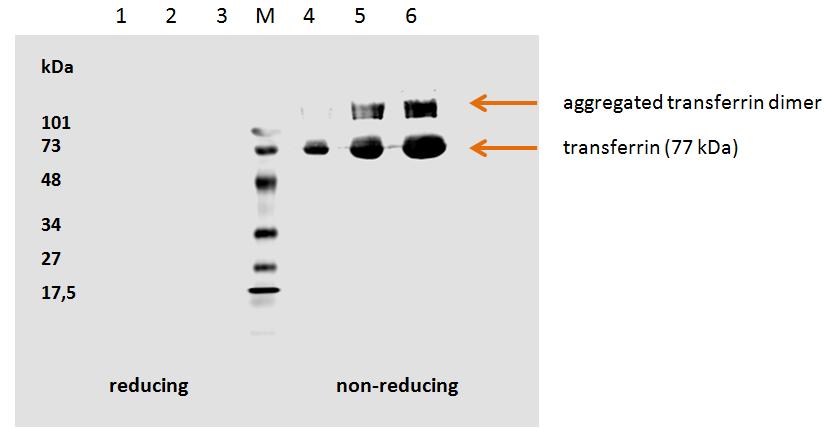Transferrin (TF) (N-term) Mouse Monoclonal Antibody [Clone ID: HTF-14]
Specifications
| Product Data | |
| Clone Name | HTF-14 |
| Applications | ELISA, FN, IF, IHC, IP, R, WB |
| Recommended Dilution | ELISA. RIA. Western Blotting (non-reducing conditions). Immunocytochemistry. Functional Application: This antibody blocks binding of Transferrin to the Receptor. Immunohistochemistry on Paraffin Sections: 10 µg/ml. Positive Control Tissue: Placenta. |
| Reactivities | Human, Porcine, Rabbit |
| Host | Mouse |
| Isotype | IgG1 |
| Clonality | Monoclonal |
| Immunogen | Purified Porcine Transferrin. |
| Specificity | The antibody HTF-14 recognizes an epitope located in the N-terminal domain of human serum transferrin, a 77 kDa single polypeptide chain glycoprotein (member of the iron binding family of proteins). It is synthesised in the liver and consists of two domains each having a high affinity reversible binding site for Fe3+. Negative Species: Bovine, Sheep, Canine (Dog) and Equine (Horse). |
| Formulation | Phosphate buffered saline (PBS), pH~7.4 State: Purified State: Liquid purified Ig fraction (> 95% pure by SDS-PAGE) Preservative: 15 mM Sodium Azide |
| Concentration | lot specific |
| Purification | Precipitation Methods and Ion Exchange Chromatography |
| Conjugation | Unconjugated |
| Storage | Store undiluted at 2-8°C for one month or (in aliquots) at -20°C for longer. Avoid repeated freezing and thawing. |
| Stability | Shelf life: one year from despatch. |
| Database Link | |
| Background | Transferrin is a monomeric glycoprotein of approximately 77 kDa, which serves as an iron-transporter. In normal plasma, transferrin has a concentration of 25-50 mmol / liter, and is usually about one-third saturated with iron, thus providing a large buffering capacity in case of an acute increase in plasma iron levels. Cells take up transferrin-iron complexes (holotransferrin) using transferrin receptor dimers. Upon binding of holotransferrin, the receptor is internalized by clathrin-mediated endocytosis. Acidification of endosomes by vesicular membrane proton pumps leads to dissociation of iron ions, whereas transferrin (apotransferrin) remains associated with its receptor (CD71) and recycles to the cell surface, where apotransferrin is released upon exposure to normal pH. Internalization of labeled transferrin thus represents an usefull approach to study endocytosis. Serum concentration rises in iron deficiency and pregnancy and falls in iron overload, infection and inflammatory conditions. Iron/transferrin complex is essential in haemoglobin synthesis and for certain types of cell division. |
| Synonyms | Serotransferrin, Siderophilin |
| Reference Data | |
Documents
| Product Manuals |
| FAQs |
{0} Product Review(s)
0 Product Review(s)
Submit review
Be the first one to submit a review
Product Citations
*Delivery time may vary from web posted schedule. Occasional delays may occur due to unforeseen
complexities in the preparation of your product. International customers may expect an additional 1-2 weeks
in shipping.






























































































































































































































































 Germany
Germany
 Japan
Japan
 United Kingdom
United Kingdom
 China
China




